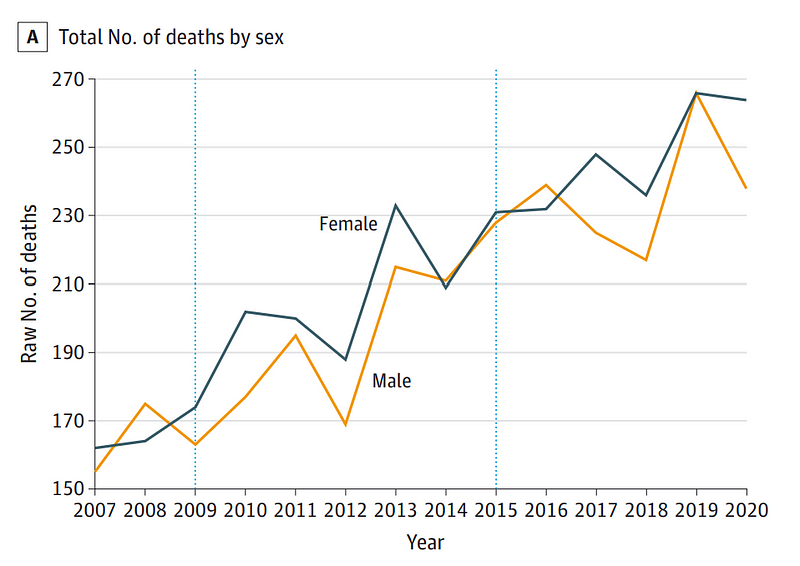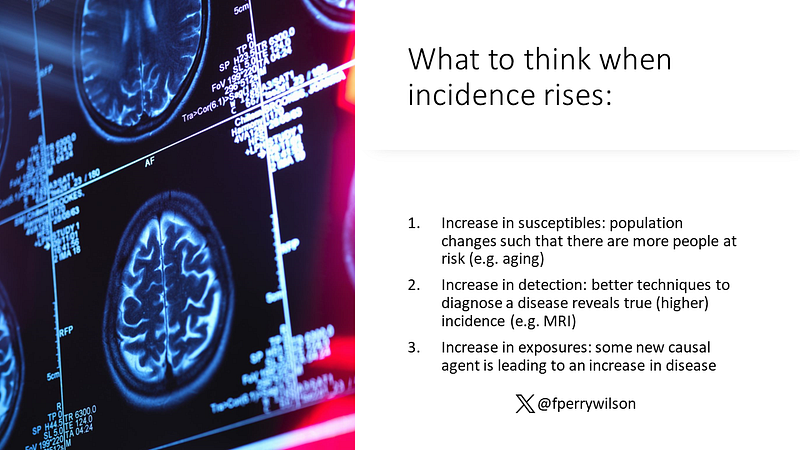Understanding the Rise in Prion Diseases: What It Means
Written on
Chapter 1: The Prion Phenomenon
In 1986, a concerning situation emerged in Britain as cattle began to perish. This condition, dubbed “mad cow disease,” was clearly infectious, yet pinpointing the exact pathogen proved challenging. By 1993, around 120,000 infected cattle were reported in the UK. Initially, there were no human cases, with the UK government asserting that cattle were not a viable host for the pathogen. However, by the mid-90s, several human cases linked to the consumption of infected cattle products surfaced. The resulting condition known as variant Creutzfeldt-Jakob Disease (vCJD) became a media sensation, recognized for its nearly universally fatal prognosis, rapid onset of dementia, and severe mobility impairments characterized by involuntary movements. Autopsy findings revealed that the brain had transformed into a spongy texture.
In response to this health crisis, the US imposed a ban on UK beef imports in 1996, which was only lifted in 2020. The mystery surrounding the disease deepened as it was revealed that the causative agent was not a bacteria, parasite, or virus, but rather a protein known as a prion—a proteinaceous infectious particle.
Prions are misfolded proteins that accumulate in cells, particularly affecting nerve cells. Unlike other misfolded proteins, prions can induce the conversion of correctly folded proteins into their misfolded forms, triggering a chain reaction that leads to the rapid accumulation of these harmful proteins and subsequent cell death.

Interestingly, prion proteins exist in all of us. While the exact function of normally folded prion proteins is unclear—knockout mice lacking them appear unaffected—they are highly conserved across mammalian species, suggesting they may serve a protective role for nerve fibers.
More prevalent than cases of mad cow disease in humans is sporadic Creutzfeldt-Jakob Disease (sCJD), which accounts for approximately 85% of prion-related brain disorders, though its origins remain unknown. Alarmingly, the number of sCJD cases is on the rise.
While there’s no need for alarm—this does not signify a CJD epidemic—discussions around the condition, which remains as dreadful as it was in the 90s, have resurfaced following a new research letter published in JAMA Neurology.
Section 1.1: Current Research Findings
Researchers led by Matthew Crane at Johns Hopkins utilized the CDC’s “WONDER” database, which compiles causes of death from certificates. While I typically approach data from death certificates with skepticism, in the case of CJD, the likelihood of its absence on a death certificate is minimal if a diagnosis has been made. The findings indicate a steady increase in CJD-related deaths in the US since 1990, alongside a rise in overall incidence.

It's important to note that it's unclear whether these cases are primarily sporadic, variant, or familial CJD. Unless there has been a substantial shift in epidemiology, the vast majority are likely sporadic.
The pressing question is: why are we witnessing more cases?

Three possibilities arise when considering this question:
- Increased Susceptibility: An aging population may contribute to the rise since older individuals are at a higher risk for sporadic CJD. Although researchers adjusted for age, an increase was still observed, albeit to a lesser extent.
- Improved Diagnosis: Since the mid-90s, diagnostic capabilities have advanced significantly. Enhanced MRI techniques and the introduction of a novel diagnostic test called “real-time quaking-induced conversion testing” may allow for better identification of affected individuals.
- New Exposure: Perhaps most concerning is the possibility of a new exposure source. Identifying such exposures can be challenging due to the rarity of prion diseases.
Given these findings, it seems prudent to increase surveillance for this rare yet devastating condition.
The first video, "The Strange Increase in Prion Diseases," discusses the rising incidence of prion diseases, examining possible reasons and implications for public health.
The second video, "Prions: What Do We Know and How to Stop Them," delves into the current understanding of prions and potential strategies for prevention and treatment.